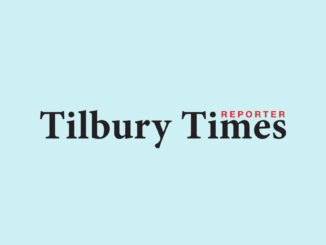
This federal election is putting the spotlight on housing affordability in Canada. Many millennials want to own homes and fulfill the Canadian dream, but are unable to afford to do so.
“If the last election was about jobs, jobs, jobs, this election is about homes, homes, homes,” said Ontario Real Estate Association (OREA) President David Oikle. OREA argues that will only happen if governments make it easier for first-time buyers to own a home. The advocacy group went through the platforms of the three major parties and broke them down under four different headings.
Increasing Housing Supply
Canadians want to own homes, but the lack of supply is causing a crisis, with more buyers chasing fewer and fewer homes. Creating more supply is essential in addressing the affordability crisis:
Liberals: Building, preserving, or repairing 1.4 million homes over four years; converting empty office spaces into housing with $300 million in new funding; creating the Multigenerational Home Renovation Tax Credit to support secondary suites in homes; creating a Housing Accelerator Fund worth $4 billion to help cities build homes faster.
Conservatives: Build 1 million homes in the next three years; release 15 percent of federal real estate for housing; encourage developers to invest in rental housing by extending the ability to defer capital gains tax when selling a rental and reinvesting in rental housing.
NDP: Set up a dedicated fast start fund to streamline the application process; mobilize federal resources for co-op, social and non-profit housing by repurposing unused and under-used properties; spur the construction of affordable homes by waiving the federal portion of the GST/HST on the construction of new affordable rental units.
All three parties have promised to build more homes. All three have a plan to repurpose underutilized federal properties, a move the group supports. Repurposing such properties will create thousands of new housing supply options and encourage further development. The Liberal multi-generational renovation tax credit could encourage provincial governments to continue creating policy that would reduce red tape on things related to the development of secondary suites and give more Ontarians access to this affordable form of housing.
The CPC’s commitment to building homes alongside transit infrastructure aligns with OREA’s position on using zoning to encourage the development of transit-oriented communities and encourage density near transit hubs by removing barriers to housing construction.
The NDP’s idea to waive the GST/HST on affordable rental housing addresses the need for a wide range of new housing for young families. A lack of housing supply causes a ripple effect: because first-time buyers can’t get into the market, they stay in rental units longer, which means people can’t move out of social housing and into apartments.
Money Laundering in Real Estate
All three parties have a plan to get dirty money out of the real estate industry. Money laundering keeps hardworking families from accessing homes. OREA advocates getting dirty money out of a real estate. A public beneficial ownership registry would require purchasers to identify themselves to land title authorities, ensuring criminals who are laundering money through a real estate can no longer remain anonymous.
Supporting First-Time Buyers
It is not a surprise that first-time homebuyers are facing the most significant challenge when it comes to Ontario’s real estate market. Millennials and young families want to own homes, but it has never been tougher to achieve due to rising home prices pushing homeownership out of reach. OREA feels that new supports for first-time buyers are definitely needed.
Liberals: Introduce a tax-free First Home Savings Account to allow Canadians under 40 to save up to $40,000 for a home; make the first-time homebuyer (FTHB) incentive more flexible to give Canadians the option of a deferred mortgage loan as an alternative to the current shared equity model; double the FTHB Tax Credit.
Conservatives: Encourage a new market in seven- to ten-year mortgages to provide stability for first-time buyers and lenders; increase the limit on eligibility for mortgage insurance and index it to home price inflation to allow those in high-priced real estate markets with less than a 20% down-payment an opportunity at homeownership.
NDP: Double the FTHB tax Credit; re-introduce 30-year terms on CMHC insured mortgages on entry-level homes for FTHB.
Both the Liberals and NDP have promised to double the first-time homebuyer tax credit (taking it from $5,000 to $10,000), which will save the average buyer roughly $1,500 at closing.
Housing Affordability
Canadians want the government to take action to make homeownership more affordable. The three political parties promise the following:
Liberals: Reduce monthly mortgage costs by reducing the price charged by the CMHC on mortgage insurance by 25 percent.
Conservatives: Fix the stress test to stop discriminating against small business owners, contractors, non-permanent employees, and casual workers; remove the stress test requirement on mortgage renewals.
NDP: Provide resources to facilitate co-housing (co-ownership agreements) and ease access to financing by offering CMHC-backed co-ownership mortgages.
The Liberal plan to lower mortgage insurance rates by 25 percent would result in an average of $6,100 in savings for an insured mortgage holder and broaden the pathway to homeownership.
Government restrictions like the mortgage stress test are unfairly disadvantaging home buyers, especially millennials looking to enter the market for the first time or young families looking to move up.
The Liberals and NDP both support co-ownership/share equity models as a solution to improving housing choice and making it easier for more people to enter the market, adding legitimacy to the rent-to-own model. “It’s clear our federal leaders are paying attention, and this election has brought Canada’s housing affordability crisis to the forefront of the political debate,” said Oikle. “The Liberals, Conservatives, and NDP all have their own plans on how to best address the crisis and have put their ideas on the table, leaving the decision with voters.”



Be the first to comment